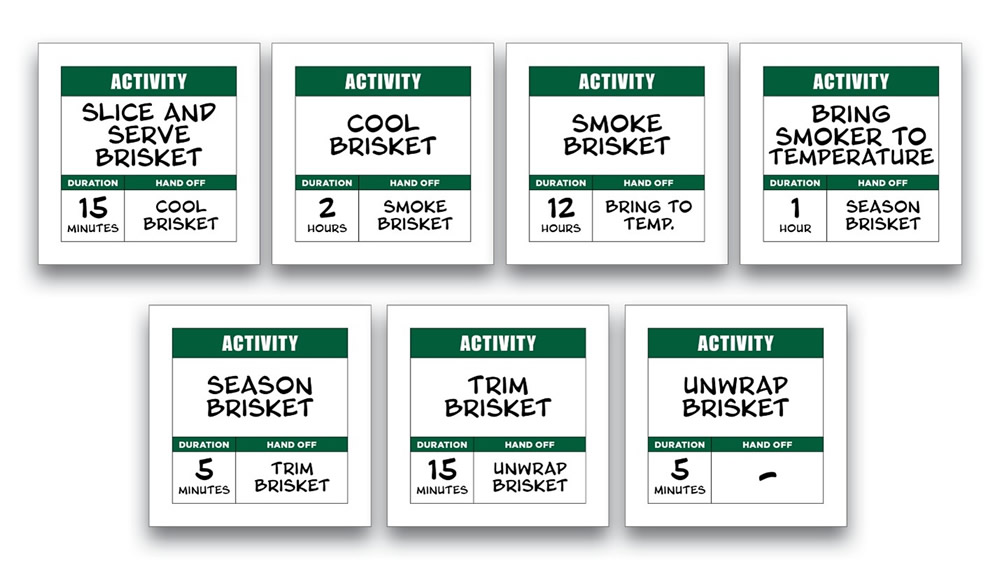I’m no Aaron Franklin, but I love barbecuing—especially when using my trusty Big Green Egg! There’s nothing quite like a perfectly smoked brisket to make family and friends happy on a scorching summer day. Now that we’re deep into BBQ season in Texas, I thought I’d use this opportunity to walk you through a quick Pull Planning exercise, which I’ll use to help me figure out when I need to start prepping my brisket. These real-life (non-construction) examples can help articulate a Pull Plan’s core concepts. Here we go with our pull planning example…
Pull Planning Example
 Step 1: The Activities
Step 1: The Activities
So, I’ve taken out my stickies and begun jotting down all the activities I need to complete to serve the perfect Texas BBQ feast:
- Slice and serve brisket
- Cool brisket
- Smoke brisket
- Bring the smoker to the right temperature
- Season brisket
- Trim brisket
- Unpackage a 12lb brisket
Step 2: The Durations
Next, it’s time to estimate how long each of these activities should take:
Slice and serve brisket = 15 minutes
Cool brisket = 2 hours
Smoke brisket = 12 hours
Bring the smoker to the right temperature = 1 hour
Season brisket = 5 minutes
Trim brisket = 15 minutes
Unpackage a 12lb brisket = 5 minutes
Step 3: The Handoffs
Almost every activity has a “handoff,” meaning a predecessor or something must be done before the next step can be taken. In other words, each activity depends on the one before it. For instance, I need to cool the brisket before I can slice and serve it; before I cool it, I have to smoke it in my Big Green Egg. Here are all of my stickies—in order, from end to beginning—with the activities, durations, and handoffs listed:
 Let’s say my goal is to have this ready at 6:00 pm on Saturday. By adding up all the durations—15 minutes + 2 hours + 12 hours + 1 hour + 5 minutes + 15 minutes + 5 minutes—I learn that I’ll need to have my 12 lb. brisket in hand at least 16 hours and 10 minutes before dinner, which means I’m going to kicking things off at 2:20 am on Saturday morning.
Let’s say my goal is to have this ready at 6:00 pm on Saturday. By adding up all the durations—15 minutes + 2 hours + 12 hours + 1 hour + 5 minutes + 15 minutes + 5 minutes—I learn that I’ll need to have my 12 lb. brisket in hand at least 16 hours and 10 minutes before dinner, which means I’m going to kicking things off at 2:20 am on Saturday morning.
The mantra of BBQ aficionados is “low and slow.” This means cooking the meat at a low, consistent temperature for an extended period, allowing the smoke to work its magic gradually. The result is meat that’s tender, juicy, and infused with smoky goodness. This process is a labor of love that requires patience—and, sometimes, ridiculously early bedtimes.
Be sure and follow Keyan Zandy on LinkedIn!









